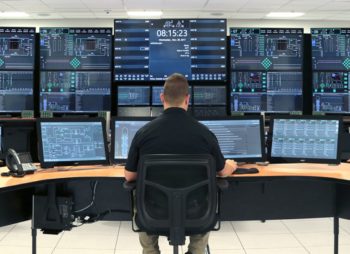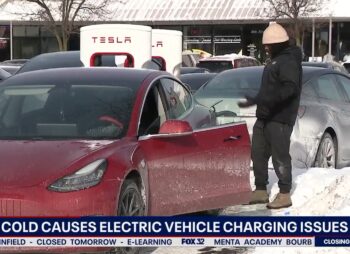
There’s a story unfolding out in the mountain west that hasn’t been drawing much media buzz but could have a significant impact on America’s future in terms of energy independence.
There is a plan underway to construct a revolutionary type of nuclear power plant near Idaho Falls that would provide enough energy to power nearly three quarters of a million homes in Idaho and northern Utah.
Many of the communities in both states that would benefit from this resource have already signed on to the deal, planned to begin operations by 2029.
But one group of activists, claiming to be looking out for the taxpayers in Utah, has launched a campaign to convince Utah communities to drop out of the project before it even begins.
The basis for their objections is a claim that the costs will be too great and the project would eventually drive up consumers’ energy bills.
The reality appears to be something quite different, but the true motives of the Utah Taxpayer Association (the group funding this drive) are probably quite different than what’s being stated.
This has the look and feel of more anti-nuclear activists up to their old tricks but flying a different flag. (deseret.com)
The Utah Taxpayers Association and a former member of the U.S. Nuclear Regulatory Commission are urging cities that have signed on to a planned nuclear power plant in Idaho to get out while they can before costs become too great.
NuScale’s Small Modular Reactor is planned for construction at the Idaho National Laboratory near Idaho Falls and would provide 720 megawatts of power, or enough energy for 720,000 homes.
The Carbon Free Power Project is promoted as the next generation design for nuclear power, featuring 12 distinct modules, with the first scheduled to come online in 2029 with the 11 others following the next year.
To start with, any projections about cost overruns, etc. are suspect right out of the gate. Most estimates are based on the previous construction of conventional fission power plants.
This project is among the first of a new generation of Advanced Small Module Reactors (SMRs). This is a technology that the Department of Energy has been looking into for some time now and it shows a lot of promise. You can read their summary of it here.
It allows reactors to be built in a series of modules by the manufacturer which are later shipped to the eventual reactor site.
This allows for more rapid construction on a significantly smaller footprint, often in areas where much larger, conventional reactors could never be located.
The plant can also be expanded at a later date if desired by adding more modules. It’s some pretty exciting technology.
As to the “fiscal conservative” group trying to get municipalities to pull out of the project, the Utah Taxpayer Association is being fronted by The Hastings Group.
One look at their client list at that link will give you an idea of their general ideological makeup.
They include:
- Bulletin Of The Atomic Scientists
- Green America
- National Resources Defense Council
- Renewable Nation
- Union Of Concerned Scientists
The Utah Taxpayer Association has also enlisted anti-nuclear power advocate Peter Bradford as a spokesperson. The list of their association with green energy and environmentalist groups goes on.
But since they’re targeting an audience in the very conservative and rural region of northern Utah, a lefty green energy approach probably wouldn’t sell very well so they’re branding themselves as more conservative, cost-cutting advocates.
The irony here is that the “Keep It In The Ground” crowd is supposed to be fighting against fossil fuels, etc. to cut carbon emissions.
But nuclear energy has zero carbon emissions, and advances in fuel rod technology have drastically cut down on the amount of nuclear waste they generate.
Nuclear really needs to be part of our overall energy strategy for the next century and this new generation of reactors holds a lot of promise for increasing our nuclear power portfolio in a safer and more cost-effective way.
Don’t fall for the hype, Utah.
Read more at Hot Air

















Agreed. Don’t get “suckered” by this front group. This modular reactor technology shows a lot of promise. In addition to having flexibility on scaling based on the number of modules implemented, I believe it (also) has the molten salt core which is easier & safer to cool the reactor. This has the possibility of being a potential “game changer” as a reliable & affordable source of base load electricity. Look no further than California. Intermittent wind & solar are NOT the wave of the future, no matter how much propaganda the environmental activists spew out…
I read the announcement in an Idaho newspaper and it sounds like this design just uses water that goes thru the reactor core which then boils. And this boiling water then goes thru the turbine generator to create the electricity and the condensed water returns to the reactor core. They said it uses natural circulation so as to not to need all the pumps. And because each module is relatively small the piping necessary is also small. But it sounds like they need a number of small turbine generators, one per module.
If this is the case there’s nothing too knew about the design besides its size. The US Navy has submarine reactors that use natural circulation, although still pressurized water reactors. And boiling water reactors have also been around for decades. It seems that this is just combining the two technologies.
The U.S. Navy’s submarine reactors are the original SMRs. The technology is proven, but can be improved.
In a previous life I was a reactor operator (and leading petty officer for the Reactor Controls Division) so am quite familiar with the Navy’s nuclear designs. We just never had a plant that only used a single loop. The heated water from the reactor went thru steam generators to generate saturated steam (couldn’t get a high enough temperature to get the higher efficient super-heated steam that typical coal plants do–this was due to the pressure limitation we had on the primary loop so we couldn’t get primary temps high enough for super-heated steam).
The Utah Taxpayers Association has been cozy with oil and gas interests for ages. When it comes time to raise a stink about advanced nuclear innovation, these lobbyists love to team up with green interests. Wind and solar are the bright shiny objects the drillers dangle in front of sincere people who care about climate change but don’t have all the facts. That said, the truth is UAMPS is looking at the NuScale project for a dispatchable source of power to follow load generated by intermittent wind and solar sources. The alternative is natural gas, which is cheap thanks to the fracking. Last I heard, none of my green friends were all that fond of fracking, but let’s hang the onus on nuclear, even though it has the potential to provide steady, dependable low-to-no-carbon electricity.